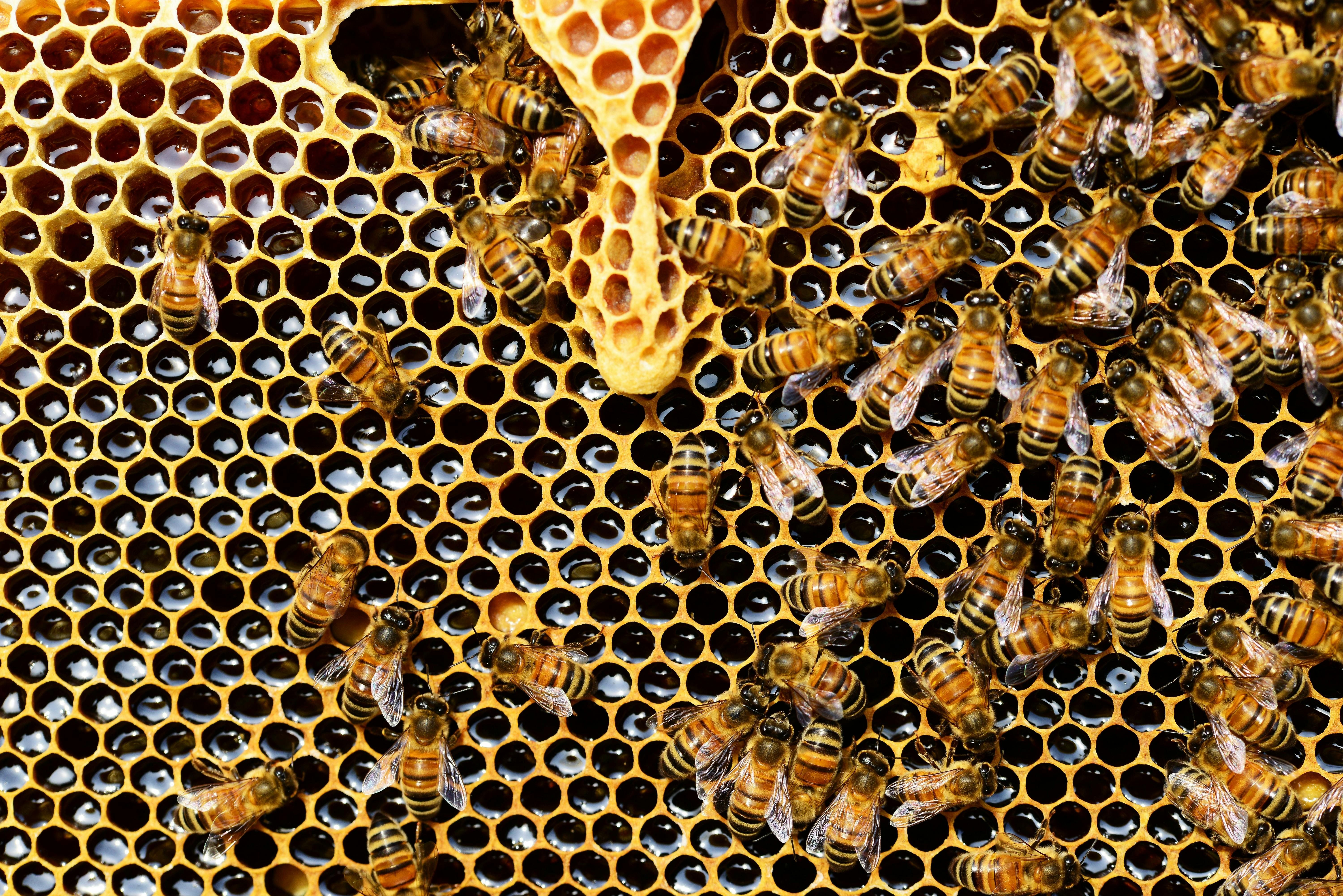
Beekeeping is the art of caring for bees in movable frame hives to produce hive products like honey and beeswax and support pollination services. Also known as apiculture, this term is derived from the Latin word ‘Apiscultura’, wherein Apis means ‘bee’ and cultura means ‘cultivation through education’.
Uses of Honey
-
Honey is a nutritious, easily digestible meal that provides energy.
-
One kilogram of honey is estimated to be equivalent to five kilograms of milk, one and a half kilograms of meat, forty oranges, or fifty eggs.
-
It is used as a carrier in many Ayurvedic and Unani medicines.
-
It has digestive and blood-purifying properties.
-
It is curative for soreness, ulcers in the tongue, and sore throat.
Beeswax and More
Beeswax is used in the manufacture of cosmetics like beauty lotions and creams, lipsticks, ointments, polishes for boots, floor and furniture, lubricants, paints, varnish ink, electrical insulating apparatus, and candles.
How Honey Bees Are Useful
Honeybees aid in pollination of many cross-pollinated crops. Bees are almost exclusive pollinators for several crops, such as clover, alfalfa, and apples. Even among song regularly self-pollinated crops, the yield is considerably increased after the visit of bees.
Types of Honey Bees
There are five significant honey bee species:
-
The rock bee, Apis dorsata (Apidae).
-
The Indian hive bee, Apis cerana indica (Apidae).
-
The little bee, Apis florea (Apidae).
-
The European or Italian bee, Apis mellifera (Apidae).
-
Melipona irridipennis (Meliporidae), often known as the dammer bee or stingless bee.
Honey Bees and Their Castes
The honeybee is a social insect that lives in colonies with a highly organized system of division of labor. A colony where relatives had resided had many combs. Each family consists of three castes: queen (fertile female), drones (males), and workers (sterile females). Every caste in the colony serves a certain purpose. Male drones are referred to as workers, while fully matured female workers are called queens. A queen, 200–300 drones, and several thousand workers make up each colony of honey bees, which can range in size from 35,000 to 70,000 individuals.
The queen is a true mother bee. The only female from a fertilized egg who is fully grown is the queen. This is a result of a total diet of royal jelly during the developmental period. She has a long abdomen extending well beyond the apical margins of the wings. She might be located close to the brood nest in the colony. A fully grown queen is about 15-20 mm long and two to three times larger than a worker.
The functioning males of the colony, known as drones, are bigger and darker than worker eggs, having been formed from unfertilized eggs. It is shorter than a queen, with a length of around 15–17 mm. Drones are not a permanent member of the colony. The fertilization of the egg during its laying is under the queen's control. The compound eyes are holoptic i.e. very large and are united at the vertex. A cluster of tiny hair covers the blunt end of the abdomen. Drones cannot sting. Drones lack stings because their stings are altered versions of female genitalia. Additionally, they lack all the structures required to gather pollen and nectar. Once the mating process with the queen is successful, it dies.
Among the two classes mentioned above, workers are the lowest in stature. On the ventral side of the abdomen, wax glands are present. Hind legs are modified for pollen collection. The mandibles are flattened and spoon-shaped which are used for molding the wax for comb building. They take care of the colony's needs and keep it in good shape. Workers' unique bodies and systems are related to the tasks they carry out.
Morphological Differentiation Among Different Castes
|
Character |
Queen bee |
Drone bee |
Worker bee |
|
Body size |
Longest |
Medium |
Smallest |
|
Wings |
Do not completely cover the abdomen |
Completely cover the abdomen |
Completely cover the abdomen |
|
Head |
Triangular and a little roundish |
Roundish |
Triangular |
|
Abdomen |
Long, gradually tapering |
Tip of abdomen blunt and hairy |
Tip of abdomen conical and subtly pointed |
|
Compound eyes |
Small and well apart |
Large kidney-shaped, meeting at the vertex |
Small and well apart |
|
Pollen collecting legs |
Not developed |
Not developed |
Well-developed |
|
Sting |
Present but without barbs |
Absent |
Present with barbs |














Share your comments